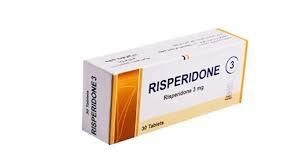A nurse is caring for a group of clients. Which of the following clients should the nurse attend to first?
An older adult client who is anxious and attempting to pull out an IV line
A middle adult client who is reporting nausea after receiving pain medication
An older adult client who has kidney failure and returned from dialysis 4 hr ago
A middle adult client who has a terminal illness and is requesting a visit from the chaplain
The Correct Answer is A
- A. This client is at risk of harming themselves by removing the IV line, which could cause bleeding, infection, or loss of medication. This is a priority issue that requires immediate intervention by the nurse.
- B. This client is experiencing a common side effect of pain medication, which can be managed by administering antiemetics, fluids, or changing the medication. This is not a life-threatening issue and can be addressed after attending to the client in choice A.
- C. This client has a chronic condition that requires regular dialysis, but they are not in acute distress at this time. They should be monitored for signs of fluid overload, electrolyte imbalance, or infection, but they are not a priority over the client in choice A.
- D. This client has a psychosocial need that should be respected and supported by the nurse, but it is not an urgent issue that requires immediate attention. The nurse can arrange for a visit from the chaplain after attending to the client in choice A.
Nursing Test Bank
Naxlex Comprehensive Predictor Exams
Related Questions
Correct Answer is A
Explanation
Implement fall precautions for the client.
- A. Implement fall precautions for the client. This is correct because risperidone can cause orthostatic hypotension, which can increase the risk of falls and injuries. The nurse should advise the client to change positions slowly, avoid alcohol and dehydration, and use assistive devices as needed.
- B. Monitor the client's thyroid function. This is incorrect because risperidone does not affect thyroid function. The nurse should monitor the client's thyroid function if they are taking lithium, which can cause hypothyroidism.
- C. Place the client on a fluid restriction. This is incorrect because risperidone does not cause fluid retention or overload. The nurse should encourage adequate fluid intake and monitor the client's fluid balance.
- D. Discontinue the medication if hallucinations occur. This is incorrect because hallucinations are a symptom of schizophrenia, not a side effect of risperidone. The nurse should not discontinue the medication abruptly, as this can cause withdrawal symptoms and relapse of psychosis. The nurse should assess the client's response to the medication, report any adverse effects, and adjust the dosage as prescribed.

Correct Answer is B
Explanation
- A is incorrect because diarrhea is not an adverse effect of clonidine, but rather a symptom of other conditions such as infection, inflammation, or food intolerance.
- B is correct because dry mouth is a common adverse effect of clonidine, which is an alpha-2 adrenergic agonist that reduces sympathetic nervous system activity.
- C is incorrect because photophobia, or sensitivity to light, is not an adverse effect of clonidine, but rather a symptom of other conditions such as migraine, eye injury, or infection.
- D is incorrect because bruising, or bleeding under the skin, is not an adverse effect of clonidine, but rather a symptom of other conditions such as coagulation disorders, vitamin deficiency, or trauma.
Whether you are a student looking to ace your exams or a practicing nurse seeking to enhance your expertise , our nursing education contents will empower you with the confidence and competence to make a difference in the lives of patients and become a respected leader in the healthcare field.
Visit Naxlex, invest in your future and unlock endless possibilities with our unparalleled nursing education contents today
Report Wrong Answer on the Current Question
Do you disagree with the answer? If yes, what is your expected answer? Explain.
Kindly be descriptive with the issue you are facing.
